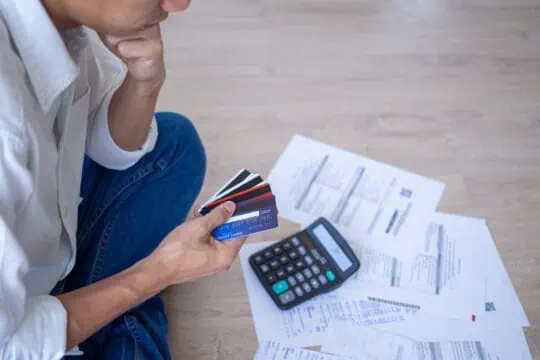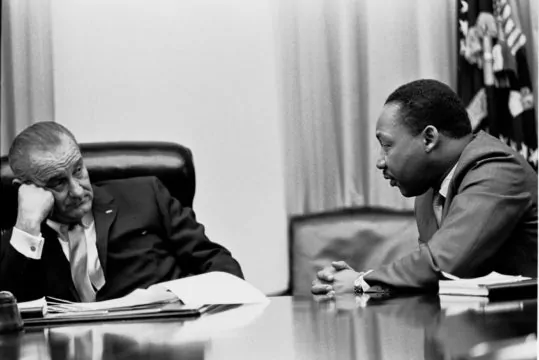When Amanda Williams wanted to pay down her $133,000 mountain of debt, she knew it was going to take motivation, discipline, and emotional support from others. The problem was her family and close friends thought it was weird when she talked about money.
“As soon as I brought [money] up, I could feel the conversation turn awkward,” Williams told Debt.com. “They would reply back with a quick ‘that’s awesome’ or ‘way to go’ and then change the subject.”
Williams isn’t alone – research from TD Ameritrade shows Americans find money and personal finances to be more taboo to discuss than religion, politics, or health issues.[1] However, 71% of millennials – more than any other generation in the study – reported: “society would be healthier if people felt they could discuss personal finances more freely.”
As soon as I brought [money] up, I could feel the conversation turn awkward.Amanda Williams, founder of @debtfreeinsunnyca
So like most millennials, Williams turned to social media.
“I needed someone to really ‘geek out’ over finances with,” Williams, 33, said.
The “debt-free community” forms
In 2016, Williams was searching the hashtags “debt-free” and “Dave Ramsey” through the explore tab on Instagram. People from all over the world were posting about getting out of debt and saving.
They commented on each other’s posts praising their wins and reassuring them during losses. It was everything Williams was looking for.
At least it was, until more accounts were sharing posts with a different agenda than her “community.”
“Those [debt] hashtags started getting used by people selling skinny wraps and teas – promoting them like they were part of a debt-free company,” Williams said. “I got annoyed.”
What happened with the skinny wraps and tea posts that invaded the “debt-free” hashtag was something that an “Instagram expert” calls “crashtagging.”
“Crashtagging is kinda sleazy, but it’s a thing,” Sue B. Zimmerman said.
Those [debt] hashtags started getting used by people selling skinny wraps and teas – promoting them like they were part of a debt-free company.Amanda Williams, founder of @debtfreeinsunnyca
Zimmerman has a decade of experience teaching businesses ways that social media can grow their customer outreach and earning potential.
To counter the “crashtag,” Williams published a post with several new hashtag ideas asking Instagram users to vote on which they liked best – #debtfreecommunity was the winner.
Find solutions to help you get out of debt.
How the hashtag makes it a community
A hashtag can be used as a hub to host information that others follow, according to Zimmerman.
There are currently more than 800,000 posts under #debtfreecommunity.
“I’m constantly sharing my money journey online and there are other people who are doing the same thing,” said Sarah Wilson, founder of the blog Budget Girl. “You feel a kinship with them.”
Six years ago, Wilson started creating weekly videos on YouTube with her amount of debt in the titles. Her videos shared details on the debt she faced and how she was paying it off.
I’m constantly sharing my money journey online and there are other people who are doing the same thing. You feel a kinship with them.Sarah Wilson, founder of @gobudgetgirl
“[My followers] were rooting for me,” Wilson, 31, said. “They learned from me and gave suggestions on how to improve different things.”
The power of a peer group
In a 2011 report titled “Saving More in Groups: Field Experimental Evidence from Chile,” authors Felipe Kast, Stephan Meier, and Dina Pomertanz documented the financial behavior of more than 2,600 people.[2]
The experiment was designed to see how “peers influence each other’s personal decision-making around savings.” Participants were split into three groups.
The first group was set up with a small loan and basic savings account with the stipulation to meet weekly in person. Researchers gave the next group cell phones to check in with each other over text messages. The control group didn’t have any “accountability system,” but were set up with savings accounts with higher interest rates.
[My followers] were rooting for me. They learned from me and gave me suggestions on how to improve different things.Sarah Wilson, founder of @gobudgetgirl
Despite having savings accounts with much higher interest rates, the control group put away half of what the first group did. The group with phones saved almost as much as those with weekly meetings.
The big payoff
Wilson was saddled with $33,000 worth of student loan debt while earning $26,000 a year as a newspaper reporter in Louisiana. She worked multiple side jobs, including a pizza delivery route with Hungry Howie’s at night. Meanwhile, she documented her journey online with the “debt-free community” hashtag.
In one year, with the odds stacked against her, Wilson paid off $10,000. Three years and three months later, her debt was gone.
Williams and her husband were featured in a local news story on the day they made their final payment on their $133,000 debt.[3]
That day, more than 7,000 Instagram viewers tuned in to watch their IGTV channel on Instagram.
There’s a popular quote that talks about staying quiet about your goals and keeping them to yourself – I feel the opposite.Amanda Williams, founder of @debtfreeinsunnyca
Williams told Debt.com she would’ve never hit her goal had she not talked openly about money on social media.
“There’s a popular quote that talks about staying quiet about your goals and keeping them to yourself – I feel the opposite,” Williams said. “Publicly sharing my goals has helped me accomplish so much.”
Source:
[1] https://s2.q4cdn.com/437609071/files/doc_news/research/2019/financial-taboos-survey.pdf
[2] https://www8.gsb.columbia.edu/chazen/sites/chazen/files/Chazen_Peer_Savings_Research_Brief_FINAL.pdf
[3] https://www.10news.com/news/making-it-in-san-diego/vista-couple-pays-off-133-000-in-debt-in-four-years









